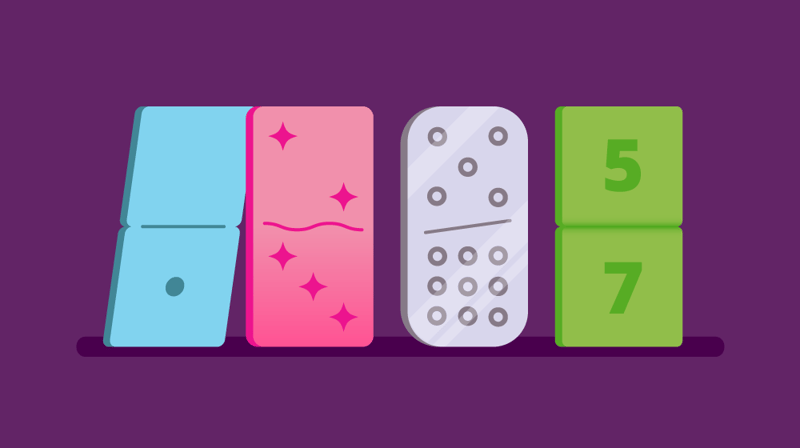Inclusion. Diversity. Privilege. These are major buzzwords in higher education.
You’ve probably already heard at least one today, maybe ad nauseam. But it’s for a good reason: Inclusion, diversity, and privilege have an enormous impact on how students move through the world, succeed in their classes, and form friendships.
Despite this, students may be wary or unsure of how to discuss these tough issues with one another. After all, it’s not exactly natural to ask, “So, how is everyone here privileged?” over lunch or casually share your experiences with discrimination between classes.
Fortunately, student affairs professionals can come to the rescue. Just as we often use games, discussions, and other interactive activities to get students to reveal their favorite kitchen utensils or Harry Potter characters, we can set the stage (or a room in the student union) to foster discussions on diversity, inclusion, privilege, and other interconnected societal issues.
But, before I get started with the activity suggestions, let’s talk about ways to make the activities themselves inclusive and how to debrief for optimal reflection and learning.
Inclusion tips
It’s wonderful that you’re aiming to openly discusses diversity and privilege, but your point will be severely undermined if not all students are able to participate fully.
So, don’t hesitate to creatively modify any of these activities for maximum inclusion.
For example, rather than requiring students to move around the room, you could ask them to hold up papers or props, share answers verbally, or raise their hands to indicate responses. This simple modification will allow students with mobility impairments to participate.
Or, in addition to asking students to respond verbally, ask them to also write short answers on a whiteboard (or write for them) so that anyone with a hearing impairment can stay fully involved. Similarly, be sure to read any written words aloud, in order to include students with visual impairments or learning disabilities.
Keep in mind that a student’s visual, hearing, or mobile impairments may not be visible nor apparent to you. So, it’s best to err on the side of inclusion.
Additionally, be mindful of ableist language and adapt appropriately. You hopefully already know to avoid defamatory words (such as the ones listed here), but you should also avoid using verbs which describe actions that may not be possible for students with disabilities. For example, rather than instructing students to “walk” somewhere, say “move” or “go toward,” and substitute “speak” with “share.”
At the end of the activity, you can even point out these modifications as practices that students themselves can utilize when leading programs and in everyday conversations.
Sample debriefing questions
Your debriefing questions should change to fit the activity, your learning outcomes and goals, and your participants’ identities. But, here are some general questions to get you (and your students) started.
- Why do you think we did this activity?
- Did any responses or actions from this activity surprise you? How so?
- What did you find easiest about this activity? Hardest?
- How might what you learned or realized today impact your future actions?
- What patterns or trends did you notice among the responses in this activity? What meaning can you glean from that?
- Were you wary of answering honestly at any point? Why?
- How do you feel after this activity? Empowered? Skeptical? Disheartened? Excited?
If you have time, you can also ask students to suggest their own questions. Providing paper for anonymous suggestions can yield questions that students may not feel comfortable asking aloud.
Now, let’s get started with the activities!
The 7 activities
1. Just by Looking at Me
Purpose: This activity allows participants to reveal personal factoids that they might not have found the right opportunity to share yet. It also breaks down stereotypes by demonstrating facets of a person that, based on their outward appearance, may be surprising.
Instructions: Have participants sit in a circle. One at a time, ask them to share their answers to the prompt: “My name is ___ and I am from ___. One thing you cannot tell just by looking at me is ___. This is important for me to tell you because ___.”
Participants can choose to disclose absolutely anything — varying from highly personal, such as having dyslexia or taking antidepressants, to something light and fun, such as loving Black Mirror or having a pet rock. Program leaders can help set the tone by first responding with their own answers.
Key debrief question: How can you find out meaningful information about your peers in the future? What is the value in that?
Bonus inclusion tip: Write out the prompt on a whiteboard or poster, or pass it around on a slip of paper. This will be helpful for participants of different learning and memory capabilities.
2. I Believe
Purpose: By being challenged to share their beliefs on controversial topics, this activity helps students examine their unique perspectives and consider why their fellow participants may feel differently.
Instructions: Hang up three sheets around the room — labeled “always true”, “sometimes true” and “rarely true” — with space for students to move near. Then, ask students to respond to statements (which you’ll read one at a time) by moving closest to the sheet that represents their opinion. The statements can address a variety of inclusion topics or be narrowed to fit your goals or the students involved. (For example, you can adapt this to be only about race or gender.)
Here are some possible statements:
- (Your institution’s name) is welcoming to people of all racial backgrounds.
- People assume I am here on a scholarship.
- Most students in my classes are of the same race as me.
- People are basically good.
- A hardworking person can overcome their lack of privilege.
- Sexism is a problem at (your institution’s name).
- (Your institution’s name) is a diverse community.
After each statement, ask volunteers if they would like to share why they responded the way they did.
Key debrief question: Which statements were the hardest to respond to? Why?
Bonus inclusion tip: If any students are unable to move around the room, the program can be modified for everyone to raise of slips of paper labeled “always true”, “sometimes true” and “rarely true” (or bright, color-coded slips to represent each response) instead.
3. What’s in a Name?
Purpose: This activity helps students get to better know one another, gaining insight into each other’s heritages, families, and life experiences.
Instructions: Have participants write their full names on a slip of paper. Then, ask them to share the meaning behind their names. What is its origin? What does it mean to them? How has it impacted their life experiences? For larger groups, participants can split off into pairs instead of sharing with everyone.
Key debrief question: Did you have any preconceived notions or assumptions about anyone’s names before this activity?
Bonus inclusion tip: Emphasize that names can include middle names and hyphenated names. If students wish, they can also share religiously assigned names, names only used by close family members, or cultural adaptations of their names.
4. Forced Identities
Purpose: This is an excellent activity for group bonding and identity examination. As it can get pretty emotional and involves students sharing rather personal facets of themselves, it’s best done with a group that’s already established a strong level of comfort with one another.
Instructions: Prior to participants’ arrival, hang up signs around the room with space for students to move near. Each sign should list one of the following words: race, ethnicity, sexual orientation, gender, first language, religion, body size/shape, physical ability, mental illness, socioeconomic status, education, and age. Feel free to add or change identity markers to fit your group.
To play, ask students to move closest to the identity that resonates the most with them, as you read a series of statements one-by-one.
Here are some suggested statements:
- This is the identity that I know the most about.
- This is the identity that I know the least about.
- This is the identity I tend to keep hidden.
- This is the identity I most like to share with others.
- This is the identity that I have most in common with the majority of my friends.
- This is the identity I am most unsure of how to talk about.
- This is the identity that I think most people judge me by.
- This is the identity that brings me the most joy.
- This the identity that brings me the most pain.
- This is the identity I believe is the most important to me right now, in this room.
After reading each statement, ask volunteers (ideally representing multiple identity categories) to share why they settled on that identity marker. Sharing their specific identities — such as their religion or mental illness diagnosis — is optional.
Key inclusion question: What was it like to have to choose only one identity from around the room? Did anyone’s selection surprise you at any point?
Bonus inclusion tip: Allow participants to suggest their own additional statements for the rest of the group to respond to.

5. Move into the Circle
Purpose: This activity helps students get to better know one another individually while showcasing the commonalities they share. It can also encourage students to share facts about themselves that they might not consider revealing unprompted.
Instructions: Have participants form a circle. Tell them that you’ll read a series of statements, one-by-one. After each statement, participants should move into the circle if the statement is true for them.
Here are some sample prompts:
- I am the youngest/middle/oldest/an only child.
- I am adopted.
- I was raised by a single parent/my grandparents/a same-gender couple.
- I went to public/private/homeschool.
- English is/isn’t my first language.
- I am multiracial.
- I identify as LGBTQIA.
- I’ve struggled to define my sexual orientation/gender identity.
- I am a first-generation college student.
- I have a visible/non-visible disability.
- I’ve utilized mental health therapy.
- I’ve felt discriminated against.
- I worry that I may have discriminated against someone.
- I’ve felt uneasy in diversity conversations.
- I sometimes feel like I don’t belong at (your institution’s name).
You can also ask students to add additional statements after you’ve read all the preset ones.
Key debrief question: How did it feel to step into the circle and be joined by several others… or to be alone?
Bonus inclusion tip: Some students may not feel comfortable identifying with some of the more personal statements. So, before starting, encourage them to be bold but ultimately make a decision (whether to move into the circle or not) that feels right to them.
6. Circles of Influence
Instructions: Hand each participant a sheet of paper listing different types of people in their lives. Instruct them to write down the name of the first person who comes to mind for each.
Here are some suggested prompts:
- your best friend
- your roommate (or hallmate)
- your favorite professor
- your favorite actor or actress
- your favorite fictional character
- the author of the last book you read for pleasure
- a religious or spiritual leader
- a famous leader you admire
- your doctor
- your hair stylist
Next, place large sheets around the room, each listing a different racial category, such as black, white, Middle Eastern, Asian, Pacific Islander, Latinx, multiracial, Native American/indigenous people, and unsure.
You’ll then call out the prompts from students’ individual papers (best friend, roommate, etc.) and ask them to move closest to the large sheet with the racial category that best applies to the person they wrote down. Throughout the exercise, ask participants to pay close attention to where they and others are moving.
Key debrief question: Are you surprised by the patterns you saw throughout the room or by your own list? Why?
Bonus inclusion tip: Participants may feel uncomfortable if most of the people they named are within the same racial category. You should address this in debriefing. Ask students how it felt to stay in the same spot. Be careful to note that you don’t aim to shame participants for their selections, but rather to help them reflect upon who resides in their spheres of influence.
7. Privilege for Sale
Purpose: Break participants into small groups of three to five. Then, pass each group a piece of paper listing out types of privileges – such as white privilege, cisgender privilege, Christian privilege, male privilege, heterosexual privilege, socioeconomic privilege, citizenship privilege, and able-bodied privilege.
Explain that for the purpose of this activity, students must imagine that they hold none of these privileges. However, they can buy them. For $1 per listing, every member of the group will be granted that privilege.
Next, hand out slips of paper to each group, listing a different dollar amount – starting at $1 and going up to just one dollar fewer than the amount needed to purchase every privilege. Explain that this is the amount each group has to spend.
They’ll have ten minutes to select which privilege(s) to purchase. The decision must be unanimous within each group.
Emphasize that, when making their decisions, students should focus on the privileges rather than the identities associated with each. For example, if a group opts to purchase white privilege, it does not mean that non-white participants wish to be white; rather, they simply desire the privileges that come along with being white.
Key debrief question: How did you go about picking privileges? Why?
What other activities have you used and loved? Let us know on Twitter @themoderncampus.





